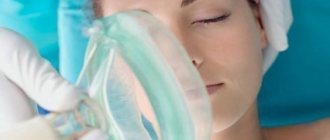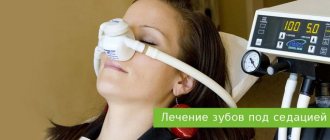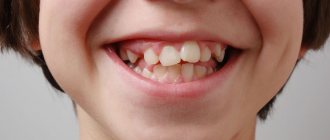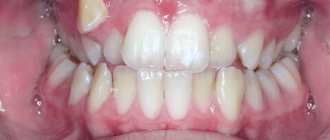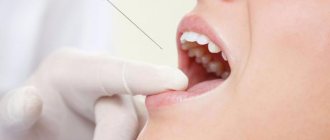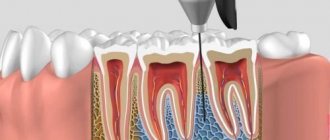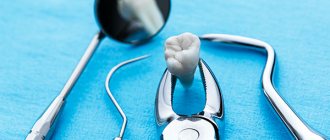For many years, dental treatment was accompanied by pain or discomfort. All this contributed to the development of a great fear of going to the dental office. People have become so afraid of doctors that they are ready to risk their health by testing dubious traditional methods on themselves just to avoid going to an appointment.
Pain and discomfort can be completely eliminated with the help of anesthesia; it is usually used when pain cannot be tolerated. But the injection or drip itself is not very pleasant, and it takes a long time to recover from anesthesia.
Therefore, local anesthesia has become the most common method of relieving pain during a session. The method of pain relief and the drug itself are constantly being improved, and this allows dentists to keep control over the patient’s sensation and condition and select an effective remedy individually for each person.
What determines the level of pain during dental treatment?
If the word “treatment” means not only the common procedure of filling teeth, then not all doctor’s manipulations in the oral cavity cause pain. For example, here is a list of completely painless procedures:
- Treatment of shallow caries.
- Whitening tooth enamel.
- Professional teeth cleaning with AirFlow.
- Deep fluoridation of teeth.
- Fissure sealing.
Most of the above procedures are preventive. Thus, it becomes clear that if you visit the dentist solely to prevent disease, there will be no need for painful procedures.
In other cases, the appearance and degree of pain will depend on the following factors:
- Individual sensitivity and pain threshold of the patient.
- The degree of tooth damage.
- The presence of inflammation, including purulent.
- Individual features of anatomy (location of the nerve ending close to the surface of the tooth, etc.).
- Susceptibility to anesthetic.
- Emotional mood before treatment.
Enamel is the least sensitive, but the more damaged it is, the more susceptible the tooth is to pain. Below the level of the gum, the neck of the tooth does not have enamel, it consists of “cement”; therefore, any dental manipulation in the lower part of the tooth will be accompanied by severe pain.
You should know that without anesthesia it is impossible to cure pulpitis in any form, since the area of its damage consists of nerve and vascular fibers.
Is it possible to have a painless injection?
Most patients, even when performing a simple filling, ask for an anesthetic injection to stop experiencing fear of sudden pain. But such an injection in itself is quite unpleasant. To reduce the pain from an injection, doctors use:
- Special carpule syringes with thin needles.
- Before the injection, the mucous part is dried with a dental hair dryer so that penetration is painless.
- The injection site is treated with anesthetic ointment or gel.
- The medicine is administered very slowly, so after the first dose is administered, the patient will not feel the second.
Deep caries
At a late stage of the disease, destruction of the deep layers of dentin occurs. Acute pain appears, as well as a reaction to temperature and chemical stimuli. There are several forms of deep caries:
- Spicy. Characterized by severe pain when exposed to irritants.
- Chronic. It is almost asymptomatic and painless.
- Caries under the gum. It is one of the most painful forms of the carious process, since it can only be detected at a late stage.
Almost always, treatment requires removal of the nerve, and therefore treatment cannot take place without pain relief.
Types of anesthesia
Methods and painkillers differ significantly in the mechanism of action and the method of administration into the body. The following types of anesthesia are used in the field of therapeutic dentistry:
- Application – involves applying a special gel or spray based on an antiseptic. It is used at the site of an anesthetic injection, removal of dental plaque and when removing baby teeth.
- Infiltration - introducing a dose of anesthetic into the gum tissue by injection. With this injection, the nerve endings are completely blocked. The teeth and adjacent tissues completely lose their sensitivity. Under such anesthesia, it is possible to treat almost any dental disease and even perform minor operations.
- Conduction - this type of anesthesia involves delivering the drug directly to the branch of the trigeminal dental nerve, which blocks the transmission of impulses along the entire length of the nerve. This method is used in areas of dense bone formations of the lower jaw, because it is impossible to administer a direct injection into this area due to the insufficient width of the open mouth. The technique of performing conduction anesthesia is quite complex, and in itself can be painful, but it provides the longest and most lasting effect in the treatment of the lower and upper jaw.
When is local anesthesia not used?
Contraindications to local anesthesia in dentistry
- Hypersensitivity to one of the components included in the anesthetic – a history of allergic reactions.
- Ineffectiveness of local anesthesia (for example, at the site of inflammation).
- Long duration and/or complexity of the intervention, the need to anesthetize a large number of anatomical structures or area of the surgical field.
The amount of drug used in this case will exceed the permissible amount and will have toxic and other side effects. Examples include:- operations for tumors;
interventions on the salivary glands;
- manipulations for traumatic injuries of the facial skeleton;
- orthognathic surgery – correction of bite by changing the position and size of jaw segments;
- craniofacial surgery.
- Insurmountable fear of treatment. In these cases, anesthesia is used - a type of general anesthesia, in which the patient is not conscious, or combined anesthesia with premedication - the use of drugs that induce a sleep-like state.
- Mental illness and behavioral disorders.
- Limited mouth opening. The following important points should be taken into account:
- the need to involve an anesthesiological team in the operation;
- potential risks during, before and after surgery;
- significantly higher price (sometimes exceeding the cost of treatment or comparable to it);
- representation mainly in Moscow and other large cities;
- the need for observation after recovery from anesthesia and surgery.
- A preliminary consultation and examination by an anesthesiologist is mandatory, who will determine the specific scheme for administering and maintaining anesthesia or another type of general anesthesia, medications and their dosage, etc. Taking into account ideas about the development of pain syndromes encountered during treatment, other groups of drugs are used:
- non-steroidal anti-inflammatory drugs;
- hormonal anti-inflammatory;
- antispasmodics;
- non-narcotic analgesics;
- narcotic analgesics;
- antidepressants.
Treatment with laser
The laser has found its use in many industries, but it is especially popular in medicine. Initially, the laser was used for operations as a replacement for a surgical scalpel. Now modern clinics use it for dental treatment. The laser works completely painlessly, and is actively used in the treatment of canals and root cysts, gum problems, and diseases of the mucous membrane.
A typical laser therapy session looks like this:
- The dentist conducts a detailed scan of each tooth for caries, using a laser to identify even damaged areas on the tooth surface that are invisible to the eye.
- The identified problem areas are then treated, with the beam targeting only the caries-affected areas with surgical precision, providing antibacterial cleaning to healthy teeth to prevent accidental infection of a healthy tooth.
- Next, the tooth is washed, treated with an adhesive system and sealed with high quality cement mortar, the composition of which is similar to the composition of a real tooth.
Treatment of dental canals without pain is carried out according to a standard protocol, and a laser beam is used for thorough cleaning of the canals and their antiseptic treatment. Under the action of a dental laser, all liquid instantly evaporates, thus the canals are completely cleaned of pulp, bacteria and other inorganic particles that got on the tooth during the procedure.
Benefits of laser dental treatment:
- Complete absence of pain, discomfort and fear during treatment.
- There is no need to wait until the painkillers take effect.
- The laser treatment procedure is many times faster than treatment with the classical method.
- Gentle treatment of the tooth surface.
- Complete elimination of the possibility of secondary caries
- Prevention of bleeding during treatment in the gingival cavities.
- Complete cleaning of dental canals and no complications
Flaws:
- Only superficial and medium caries can be treated with laser
- High cost of treatment due to the high cost of equipment.
- Physicians must have appropriate qualifications in handling such a device.
“General” anesthesia and sedation
Dental treatment under sedation at “22 Century” Dentistry.
In our clinic you have a unique opportunity to solve all your dental problems in one day. Modern types of “general” anesthesia and sedation used in “22nd century” dentistry allow:
- Carry out most treatment procedures in one clinic visit;
- Reduce recovery time after the procedure (usually this takes no more than a day);
- Overcome the fear of visiting the dentist.
Many people think that anesthesia and sedation are expensive paid services that ordinary patients cannot afford. However, it is not! The cost of these procedures is only slightly higher than local anesthesia. You can see this for yourself in our “Price List”.
If you need to treat 1-2 teeth or you simply do not want to resort to anesthesia or sedation for some reason, there is a wonderful alternative - local anesthesia, for which new modern drugs are used in our dentistry. Let's talk about this pain relief method in more detail.
Pain during dental treatment
What determines the occurrence of pain:
- On the patient's degree of susceptibility;
- Neglect of the problem;
- The presence of purulent inflammation;
- Depth of tooth damage;
- Location of roots and lateral branches;
- Whether the patient took alcohol and painkillers before visiting the doctor.
Enamel is the least sensitive. Its destruction increases the tooth's susceptibility to pain. There is no enamel below the gum level, so the discomfort is pronounced. It is impossible to treat the pulp without anesthesia, since this tissue is penetrated by nerve fibers.
How will you feel during the procedure?
At the initial stage, numbness of the skin, heaviness in the legs and throughout the body, changes in the perception of sound signals, dizziness, and loss of coordination may occur, but clarity of consciousness is maintained. Then comes a feeling of complete relaxation of the body, absence of painful irritation, and easy immersion in sleep. This entire range of sensations manifests itself in the first 5 minutes of exposure to the drug.
Xenon has an intoxicating effect and literally immerses a person in a feeling of euphoria. Therefore, some people (especially children) who are not familiar with this feeling may experience fear or even panic. But you need to understand that the effect of xenon can be stopped at any time, or the concentration can be increased so that the patient almost completely falls asleep.
Indications
Dental sedation is indicated in a state of increased excitability, fear of treatment, but is not limited to this. This method must be used if there is:
- strongly expressed gag reflex;
- mental problems that exclude interaction with the patient;
- traumatic manipulations.
Like any medical intervention, mind control using medicinal methods requires careful preparation. The decision is made by the doctor taking into account all the data.
Sedation in pediatric dentistry
Up to 50% of children
[1] hide dental problems due to fear of treatment. This affects their quality of life and oral health both in childhood and when they grow up. Therefore, the use of mind control measures when providing dental care to children is justified, subject to strict adherence to rules and regulations. Most often, medicated sleep during dental treatment in children is achieved using nitrous oxide, but there are studies that have confirmed the effectiveness of the use of other medications. It is worth remembering that sedation should be used only when no other method of dental treatment for a child does not work. This will help avoid harmful consequences.
Types of anesthesia used in dental practice
The type of anesthesia that the anesthesiologist will choose depends on the scale and trauma of the planned dental operation. There are several ways to put the patient into a state of complete or partial loss of consciousness for the purpose of comfortable and painless correction of the dentition.
Depending on the specific situation, anesthesiologists use the following types of anesthesia:
- Combined endotracheal anesthesia is used in cases where extensive operations on the maxillofacial apparatus are planned or there is a threat of obstruction of the upper respiratory tract due to changes in the anatomical relationship of the tissues of the nasopharynx;
- The inhalation type provides peace of mind to the patient during a short and minimally invasive process of treatment and restoration of dental elements;
- Intravenous mononarcosis provides short-term anesthesia, but, if necessary, the effect can be extended;
- Combined or multicomponent injection of drugs into the bloodstream (total anesthesia) in order to provide an anesthetic barrier in time, for example, when a dentist performs bone grafting, implantation, or complex wisdom tooth extraction.
To the question of whether it is possible to treat teeth under general anesthesia, there is an exhaustive positive answer. Even if there are contraindications, the anesthesiologist will definitely find a way to make a visit to the dentist comfortable and painless. Most often in dentistry, a combined intravenous type of anesthesia is used, in which several drugs are administered in a certain sequence to achieve the safest and deepest drug-induced sleep, reduce the likelihood of side effects and prevent postoperative complications from the central nervous system.
Treatment under general anesthesia (anesthesia) - carried out only for special indications
Treatment under general anesthesia (Narcosis) is carried out only for special indications, when the risk justifies the result of a large-scale recovery process due to extensive surgery, a high degree of trauma and, accordingly, severe pain. For example, for jaw fractures, tumor removal. Sedation is safer.
Levin Dmitry Valerievich
Chief physician, Ph.D.
For minimally invasive dental procedures, local anesthetics are used for pain relief along with light sedation, which is the safest, does not require additional training and long-term restoration of all functions of the nervous system by our full-time neurologist.
Ultracain DS
The analgesic basis of the first two drugs is ARTICAINE (amide anesthetic from the thiophene series), an antispasmodic - lowers blood pressure. It is characterized by rapid action - anesthesia occurs in 0.5-3 minutes. Articaine is 2 times stronger than lidocaine and 6 times stronger than novocaine (anesthetics of previous generations), less toxic, relatively quickly eliminated from the body. Its half-life is, on average, 22 minutes, that is, all traces of the drug disintegrate in 44 minutes and are then completely eliminated from the body. Has high penetrating ability. It is distinguished by high purity of the solution. Allergic reactions to articaine are very rare - one in one hundred thousand injections ; the use of articaine, according to studies, is safe in 99.4% of cases. They also contain a vasoconstrictor (a substance that causes constriction of blood vessels and a decrease in blood flow in them) - adrenaline. The use of a vasoconstrictor continues and enhances anesthesia. The drug also contains antioxidants (sulfites) - substances that prevent the oxidation of adrenaline.
Ultracaine does NOT contain parabens (anesthetic preservatives), which significantly reduces its toxicity. In addition, parabens can cause allergic reactions.
Thus, ultracaine is:
- a strong anesthetic with moderately low toxicity, due to its components;
- the safest drug for pregnant women, because articaine does not penetrate the hematoplacental barrier - the barrier separating the blood of the fetus and the blood of the mother (Ultracaine DS).
School-age children can also use Ultracain DS. We always remember that the administration of an anesthetic solution with adrenaline is CONTRAINDICATED for children under 5 years of age, patients with pathologies of the cardiovascular system, with endocrine pathologies, taking antidepressants, thyroid hormones, drugs that block beta adrenergic receptors; - an anesthetic that practically does not require postoperative pain relief;
- a drug that provides a rapid onset of anesthesia, depending on the anesthesia tactics chosen by the doctor, the effect occurs within 30 seconds to 3-5 minutes);
The duration of anesthesia is, depending on the technique chosen by the doctor, from 1.5-2 hours to 5-6 hours. The choice of different techniques (infiltration, conduction anesthesia) depends on the planned dental procedure. For example, there is a difference between the treatment of caries of one tooth and the complex removal of a wisdom tooth. - good local and general tolerability. According to studies, only 4.3% of patients experienced toxic reactions, which was caused by the presence of adrenaline and sodium disulfate in the anesthetic solution.
- For standard procedures, a small amount of anesthetic is required (0.9 ml-1.8 ml).
I would like to note that for standard dental operations it is better to use Ultracain DS (adrenaline 1:200,000). A strong anesthetic provides high-quality anesthesia even during complex, long-term interventions, and a small amount of vasoconstrictor ensures low toxicity of the anesthetic solution. And we prefer to consider Ultracaine DS forte (adrenaline 1:100,000) as a “reserve anesthetic” in more complex situations:
- anesthesia of the lower lateral teeth (molars) for their treatment and depulpation;
- pain relief for inflammatory processes in the maxillofacial area (periostitis, osteomyelitis);
- for particularly traumatic interventions;
- in patients with a low pain threshold.
